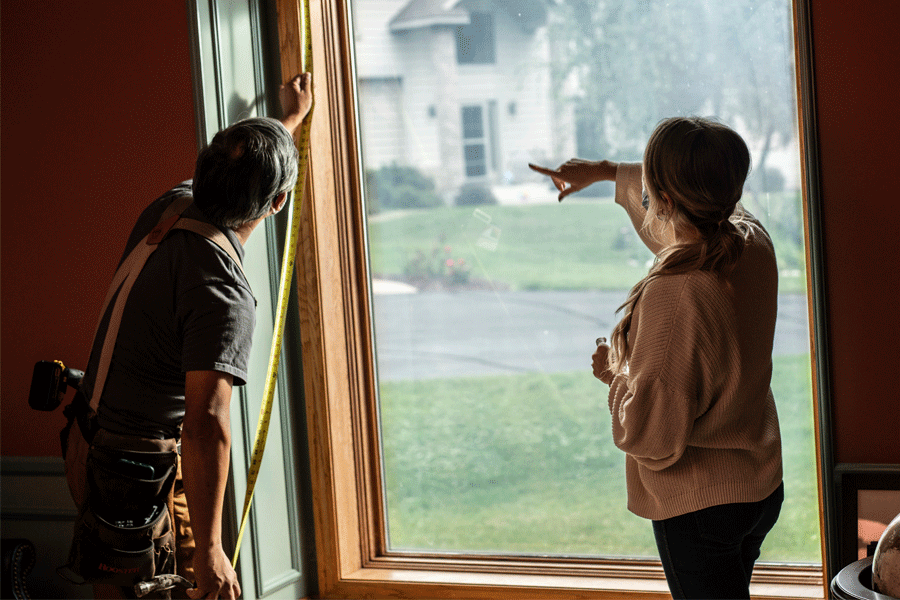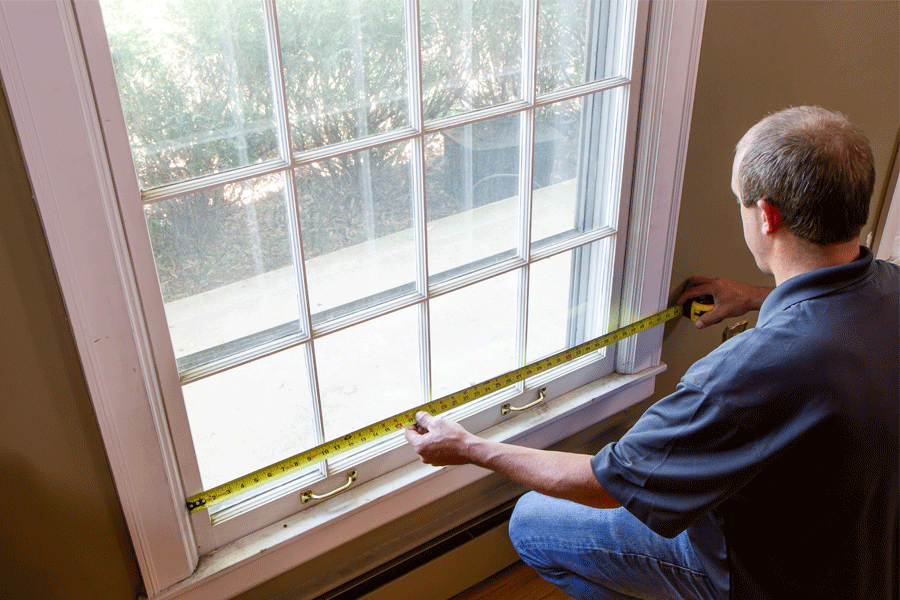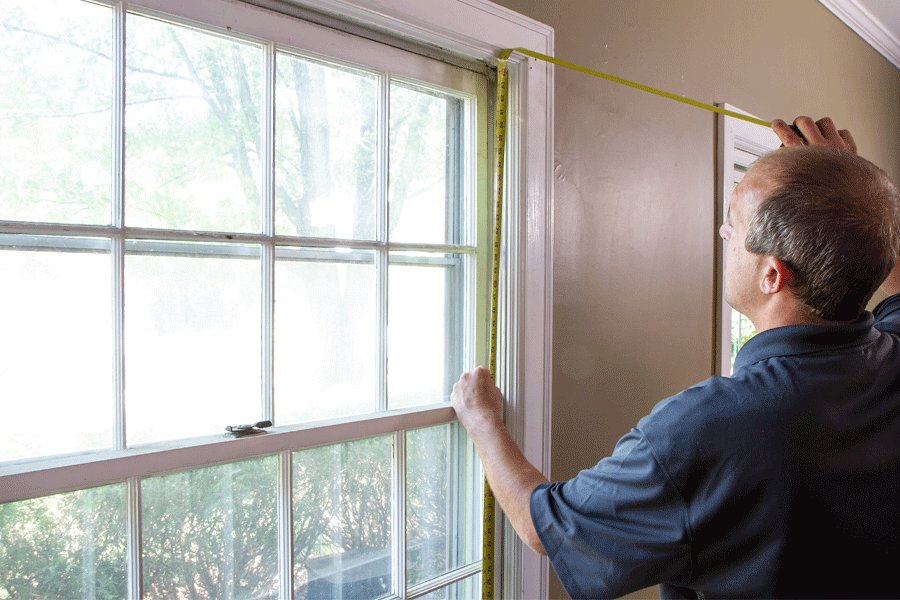Tips
How to measure windows

If you’re thinking about replacing your windows but aren't quite ready to call a contractor, measuring your windows can be a first step to more informed shopping. Let's dig in!
Getting started
Before you start, you’ll want to gather a tape measure, pen, and paper. It can be useful to have a helper too, especially if you have large windows.
Tip: To help you track dimensions and make other necessary assessments, download one of our measurement guides, like this one for the 400 Series.
You also need to understand a few different parts of a window before taking measurements. These include:
- Jamb: The pieces forming the top and vertical sides of a window or door frame.
- Head (or head jamb): The horizontal piece forming the top of a window or door frame.
- Sill: The horizontal piece forming the bottom of the window or door frame. Here’s the equipment you’ll need:
1. Measure to see if your windows are square
The first thing you’ll want to do is check and make sure your windows are in square alignment. This means all four corners meet at 90°. To do this, you’ll take two diagonal measurements from inside your home.
- Start in the upper left-hand corner where the head meets the side jamb and measure to the lower right-hand corner where the side jamb meets the sill. Measure to the nearest 1/8 inch.
- Next, measure from the upper right-hand corner where the head meets the side jamb and measure to the lower left-hand corner where the side jamb meets the sill. Again, measure to the nearest 1/8 inch.
If the measurements are within 1/8 inch of each other, your windows are square.
Why measure windows for square alignment?
It’s useful to understand whether or not your windows are in square alignment for several reasons.
- If your windows are square, you might be able to use an insert replacement window, which fits into an existing window frame. This type of replacement window can help you save money, preserve your existing trim, and offer other benefits.
- If your windows are out of square, you’ll need to consider sizing adjustments when ordering new windows. Repairs to the rough opening might be needed as well. For this job, you’ll want an experienced window contractor. Find one in your area through our Certified Contractor program.
2. Measure window width
Take this measurement from inside your home. Measure from jamb to jamb or drywall to drywall if you don’t have trim around your windows. Round down to the nearest 1/8 inch, and measure from three different spots: near the top, at the center, and near the bottom.
Use the smallest measurement as your width dimension.
Tip: As you're measuring, you might want to note:
- The types of windows in your home (double-hung, casement, picture, etc.).
- The number of windows you have in your home.
- Any damage to or issues with your windows.
This information will help you communicate your needs when window shopping and get a good sense of the cost right off the bat.

3. Measure window height
Again, measuring from inside your home, you’ll measure your window’s height from head to sill. Measure to the nearest 1/8 inch in three different spots: left, center, and right
Use the smallest measurement as your height dimension.

With the measurements you’ve taken, you’ll have the basics needed to begin comparison shopping. If you're considering replacing windows yourself, check out the FAQ section below.
FAQs about DIY window replacement
How do I measure for replacement windows?
How to measure
If you’re interested in replacing windows yourself, you’ll need to take further measurements and make further assessments beyond what’s described here. To help you do this, download the measuring guide for the window series you’re interested in — Learn more about our window series.
Will an insert replacement window work for me?
Insert windows
Windows can be replaced with either an insert or a full-frame replacement unit. An insert window is installed inside an existing frame. It can help you save money, but it won’t work in every situation. Here are some factors to consider:
- The existing rough opening must be in good condition, i.e., it must be plumb (vertical to the horizon — 90°), level (parallel to the horizon — 0°), and square (corners meet at 90°).
- The window must also have a minimum jamb depth (space in between inside and outside stops) of 3 ¼ inches.
- Find more details about insert replacement windows insert replacement windows
Where can I buy Andersen® windows?
Where to buy
Find Andersen® windows at your local The Home Depot® store or a building supplies dealer. Our Where to Buy tool will help you find what’s in your neighborhood.
If you’re interested in tackling window replacement yourself, we’ve got a guide that’ll help you prepare for a DIY installation.
What are local building code requirements?
Find the right code
If your home has older windows, your new windows might need to meet certain requirements that the old windows did not because of changes to the building code. For example:
- Sometimes tempered glass is required in bathrooms, with a low-placed window, or for transom windows above doors.
- Sometimes a bedroom might require a larger window in order to meet egress requirements (or windows that open wide enough to allow for an emergency escape).
- Sometimes local conditions require windows meet certain performance criteria, for example in coastal locales.
If you plan on taking on window replacement yourself, contact your local code official to find out about requirements in your area.
Ready to take the next steps in your window selection process? We’ve got the tools you need to start envisioning your perfect windows. We can also help you find the right professional.
